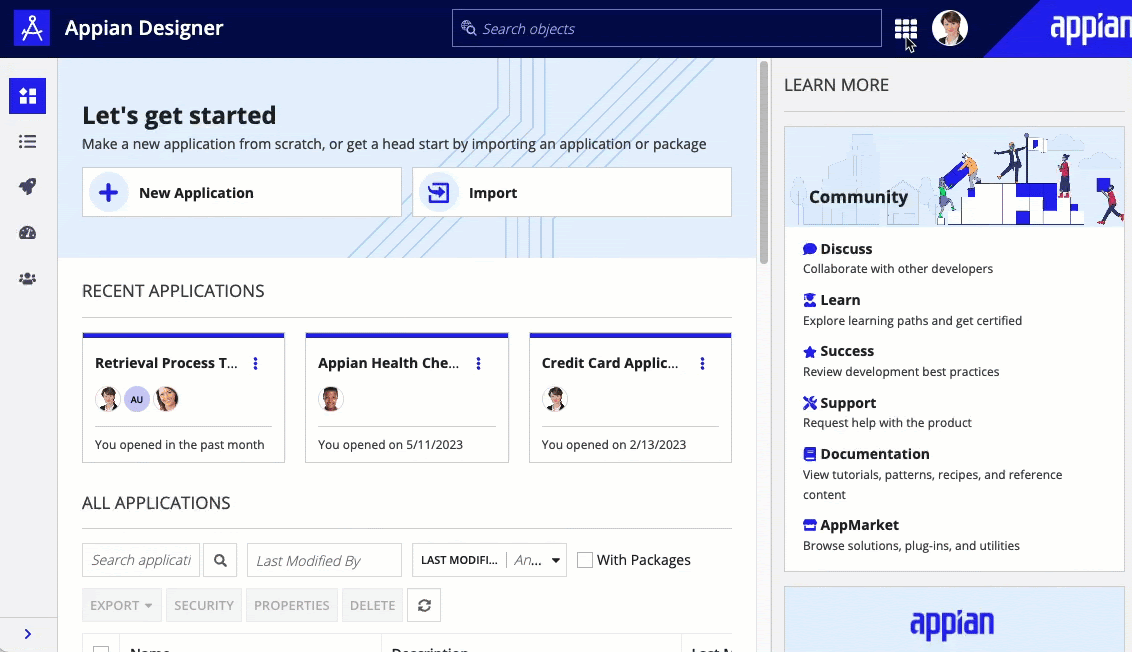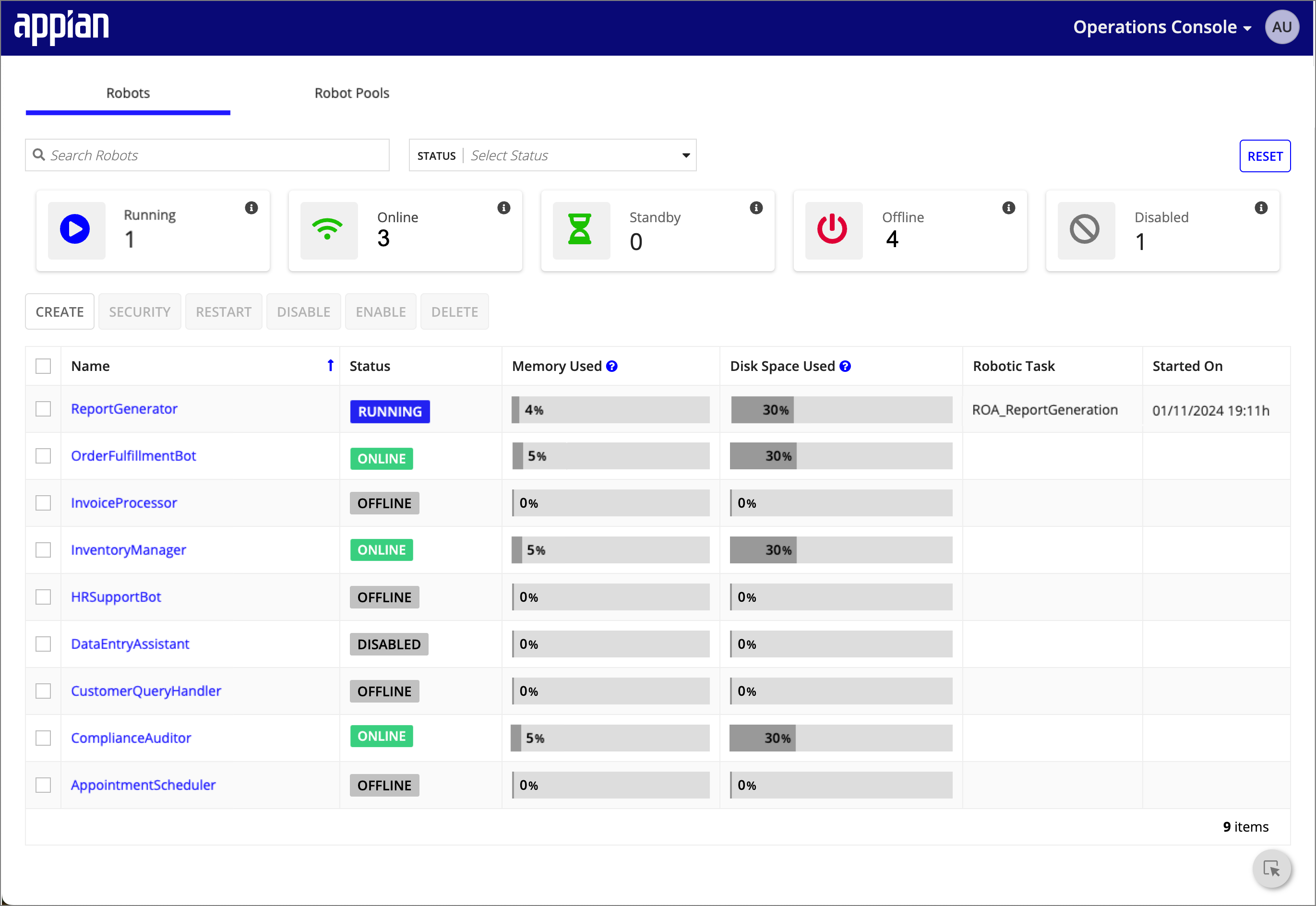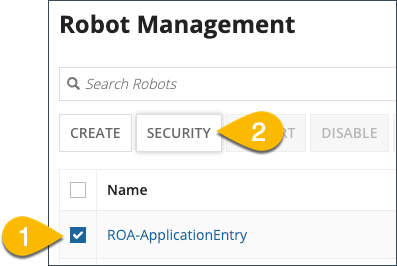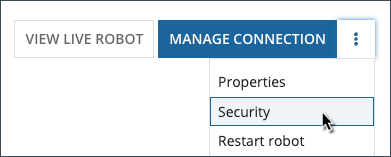| The capabilities described on this page are included in Appian's standard capability tier. Usage limits may apply. |
A robot is a digital worker that's made up of two parts: a host machine and an agent. A robot needs a workspace, just like a human worker does. The host machine is the environment in which the digital worker completes robotic tasks. The host machine can be a physical machine, such as a separate computer, or a virtual machine on a cloud server. Multiple robots can map to the same host machine.
To execute a robotic task, the robot needs certain data or information from the server. The robot communicates with the server through an agent, which is a file you install on the host machine. Agents must be up and running on the host machine for robotic tasks to execute properly and communicate the results back to the console.
The Operations Console is designed to allow Operations Managers to set up and maintain a fleet of robots to support robotic task executions. Any user who is added to the Designer role, System Administrator role, or a member of the RPA Operations Managers system group has access to the Operations Console.
Administrators can control who has access to the Operations Console by updating a user's group membership in Appian.

By default, Operations Managers can perform the following actions:
Additionally, Operations Managers can take the following actions on a robot when their assigned permission level matches the permission level set on the robot's security role map.
Tip: Only administrators can create and delete robots in the Operations Console.

Security for robots consists of the following:
| Action | RPA Operations Manager | Designer |
|---|---|---|
| Access the Operations Console and view the Robot Management page | Yes | Yes |
| Create a new robot | Yes | No |
Starting from the Appian 23.4 release, newly created robots can only be secured using role maps. The security role map of a robot controls whether users can view or modify it and its properties. Unlike some other objects, Robots never inherit security.
The following table outlines the actions that can be completed for each permission level in a robot's security role map:
| Robot Actions | Administrator | Editor | Viewer | Deny |
|---|---|---|---|---|
| Monitor executions (Also requires Viewer, Editor, or Admin permission on the robotic task) |
Yes | Yes | Yes | No |
| View list of robots | Yes | Yes | Yes | No |
| View robot dashboard (robot details) | Yes | Yes | Yes | No |
| Edit properties | Yes | Yes | No | No |
| View security | Yes | Yes | No | No |
| Edit/Enable/Disable auto login | Yes | Yes | No | No |
| Update security | Yes | No | No | No |
| Download and install agents | Yes | No | No | No |
| Download and install auto-login | Yes | No | No | No |
| View live robots | Yes | No | No | No |
| Enable / Disable robot | Yes | No | No | No |
| Lock / Unlock robot input | Yes | No | No | No |
| Restart robot | Yes | No | No | No |
| Delete robot | Yes | No | No | No |
If you are using Appian 23.4 or later, you can permanently switch your robots from using permission tags to role maps. Follow these steps in the Operations Console to transition a robot to security role maps and remove permission tags.
Use one of the following methods to navigate to the robot Robot Security screen from the Robot Management screen.
| Method | Example |
| Select the checkbox next to the robot then click SECURITY. |  |
| Select the robot you want to change. Result: The Robot Detail page displays. Select Security from the action menu. |
 |
 button. Click Create when you are done creating the group.
button. Click Create when you are done creating the group.If you need more information about managing robots or information about generally monitoring things in Appian RPA, see the Manage category.
Robots